Business Profile: EV West
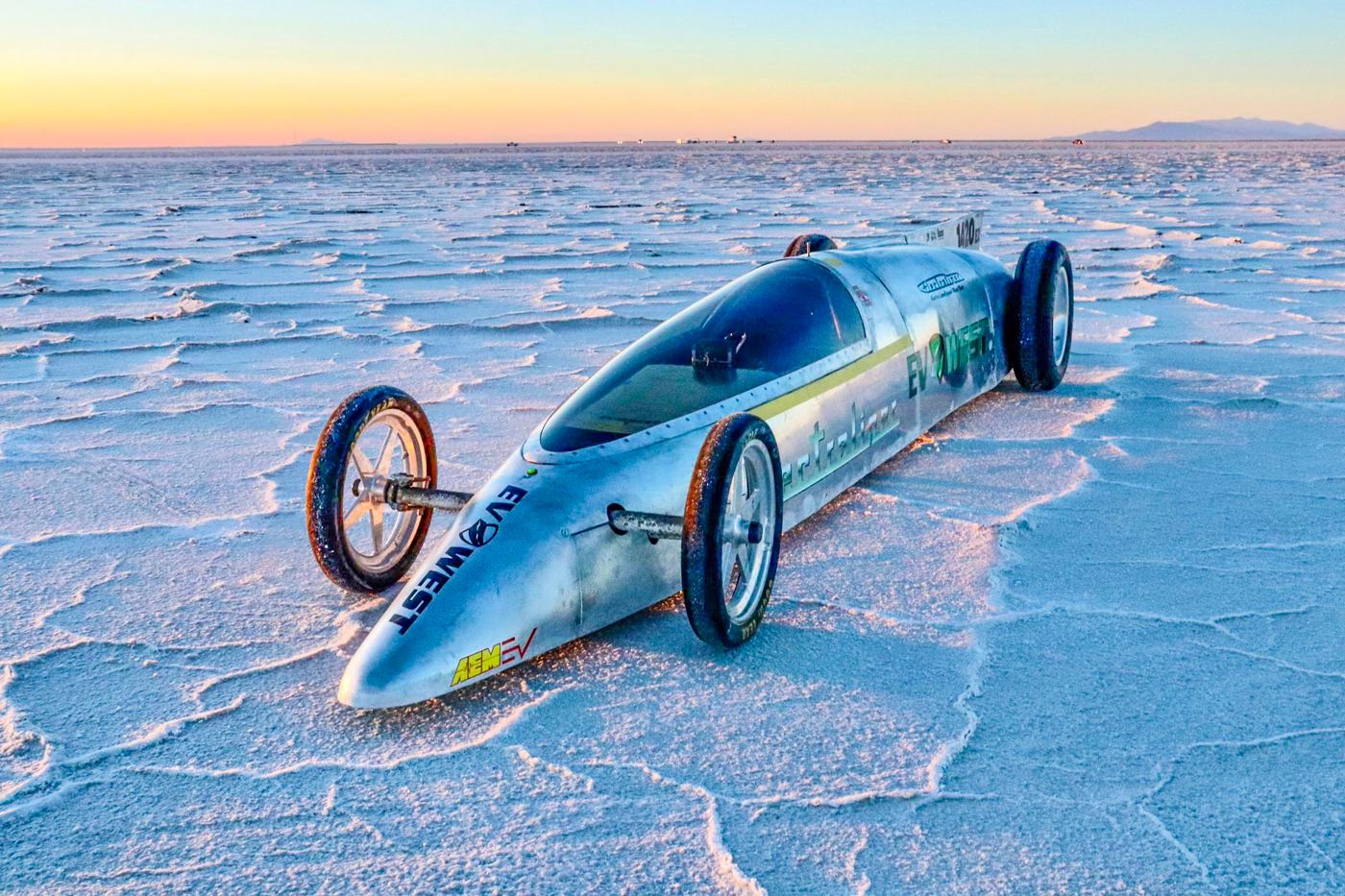
A hot-rod rebel at heart, Michael Bream found engineering freedom on the wide new frontier of EV racing with EV West. Here, he offers us his unique perspective—and candid comments—on both the immediate limitations and long-term promise of electric auto racing.
Michael Bream believes that electric power will save auto racing.
He speaks his mind with infectious enthusiasm and vintage SoCal surfer-dude style, liberally dropping “way cool” and even “gnarly” into the rapid music of his words. He chose the name “EV West” to honor the West Coast hot-rod scene of his father’s youth. Dad is an engineer, too, who “always wanted to improve things, because that’s what you do on an amateur race team, which we had. And when we were doing that, I felt so restricted by the regulations. I wanted to do something more open.”
Bream understood that such rules were necessary to keep the sport competitive; still, he chafed against their restraint. “In 2009 we were running a BMW E30, and there was this new series called the EV Cup. So I thought I should build an electric E36.” EV Cup folded before its first race, but by 2012 Bream had turned his attention to the Pikes Peak International Hill Climb, where the promoters had “carved out a class” for EVs.
Friend-of-a-friend Boris Said was enlisted to pilot the electric BMW—before a forest fire in Colorado Springs delayed the historic hill climb until the same weekend as Watkins Glen. With Said unavailable, Bream decided to drive himself. He’d never even been to Pikes Peak, but he watched in-car videos until he’d “memorized the course like it was a video game. And then I went there and raced, and the car ran like a beast. We didn’t have to worry about oxygen anemia at the top. It was just insane.”
Bream’s 400-horsepower electro-Bimmer climbed the 5,000-foot grade in 11:58.929, a new record for a street-legal electric conversion. “The coolest thing is that I spent three hours at the top, hanging out with the racers from the vintage class—the Mustangs, Cobras, ’Cudas, 911s—and they’re like, ‘Hey rook, how’d you do?’” Bream re-checked the board to be sure of his time. “And then this guy goes, ‘You just beat our best time by 6 seconds.’
“And then people started reaching out, because in 2012, nobody was building performance EVs,” he added.
Breaking Stuff And Breaking Through
People were building EVs, and components were available—but information regarding performance, frustratingly, was not. “It was really weird from a racer’s standpoint,” Bream explained. “You could go to any knowledgeable speed shop and say, ‘I have a 1969 Camaro shell, and I’m thinking about an LS3 with a 10 psi turbo,’ and they could tell you what it would run in the quarter-mile. Now try that with an electric. I was calling people trying to get information on a motor: Could they tell me the peak torque? ‘No, but if you’ve got a minute, I can tell you how many CO2s you’re going to save’. And I was like, ‘Oh, man, electric-car people are not hot rodders like us.’
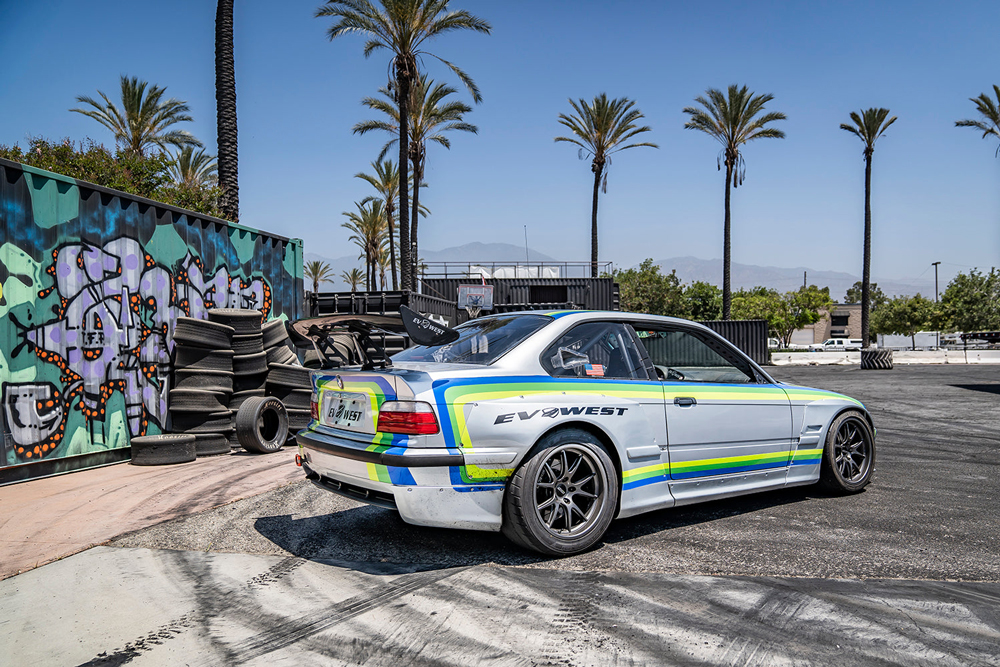
“I felt I had to relive my dad’s era, because back then all their stuff was still developing. They didn’t have fuel injection; they didn’t have a lot of things. Dynamometers were analog and not very accurate. So it was a lot of seat-of-the-pants experimentation. A lot of their theory came from somebody trying something, and maybe it made more power. I guess I got lucky because a lot of that ethic wore off on me.”
Bream firmly believes in what he calls FAFO: “Fool Around and Find Out,” in a more printable translation. While prepping his BMW for Pikes Peak, he probed the limits of available components. One motor got so hot at high rpm that the commutator came apart. Another melted the varnish on its field windings. One supplier complained that Bream would break his motor and make him look bad. “And I said, ‘No, I’m going to break your motor and be super quiet about it, but I’ll know where the limit is.’”
Bream continued to apply the FAFO philosophy when EV West built the Electraliner, a Tesla-powered, dry-lakes streamliner. “We tested six or seven battery packs until they caught fire. Then we knew we had a battery we could easily run for six minutes, when we only needed it to run for two. So we had a 3X factor of safety.
“That’s a way we offer value to our customers,” by being able to answer questions about components, when other suppliers “don’t even know what you’re talking about.”
At Bonneville in August 2020, land speed racing veteran Jim Hoogerhyde pressed the Electraliner to 238 mph, and with an official two-way average of 229.363 scored a new record for Class E2, electric vehicles weighing up to 2,200 pounds.
“A buddy of mine does portable power,” Bream added. “So we took this little trailer with a battery charger and solar panels on it, and oh, man, it was killer, because The Wall Street Journal and The New York Times came out and did articles on us. It was so cool to see this land speed car on the salt with solar panels charging it. It’s phenomenal to have that kind of horsepower come from something as benign as a little solar panel on your roof.”
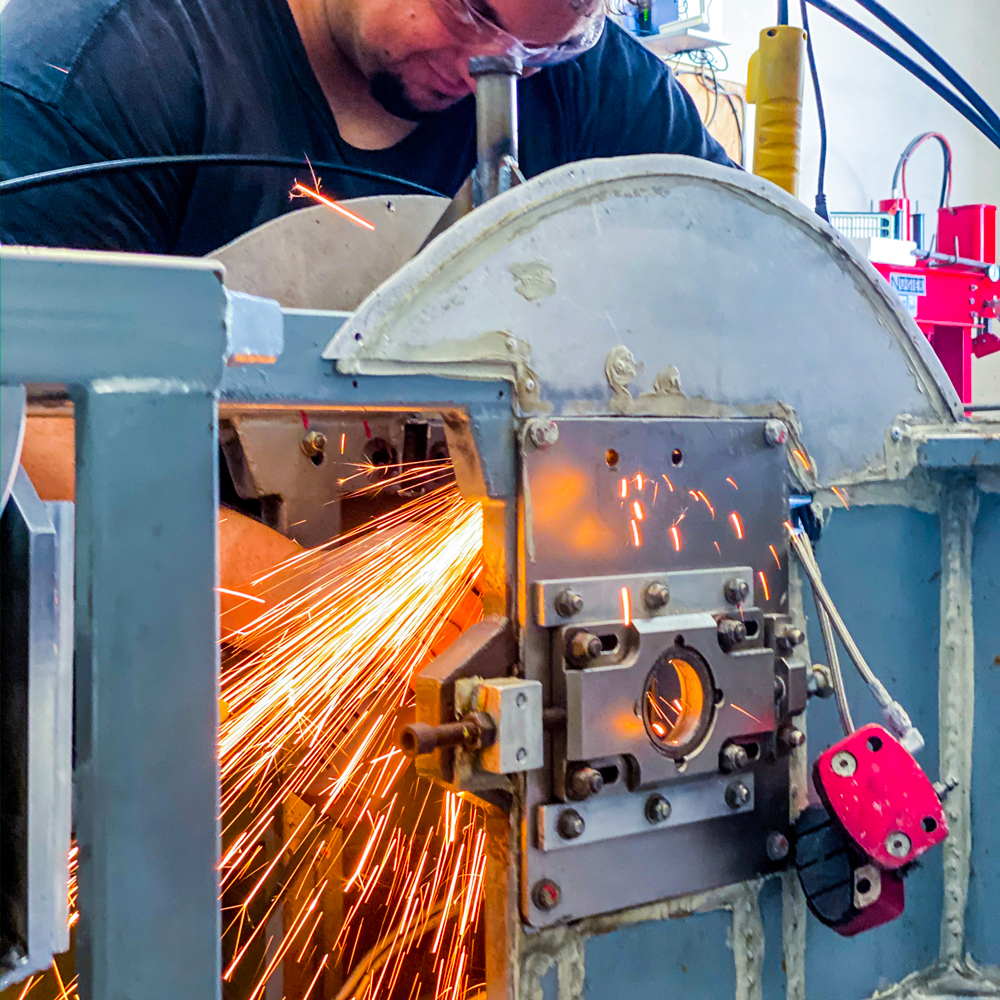
Bream returned to Bonneville in 2021 with the solar-power trailer and two electric lakesters. EV West technician Chris Spicer, recruited to drive the rebodied Electraliner, managed an impressive 196 mph in his rookie outing. Hoogerhyde saw 240 mph in Nebulous Theorem II, built in 1989 by multiple-record-holder Jack Costella and converted to electric power. Unfortunately, mechanical issues prevented a proper two-way run for an official time.
EV West has also rebuilt the Pikes Peak BMW as an 800-hp electric drift car; and supplied the 535-hp electric driveline for the 125-mph desert-racing buggy built by Strategic Racing Designs and the clean-energy non-profit Strategic Recovery Institute. “The next thing I’d like to do is the Volkswagen Mount Shasta event,” said Bream, citing the annual off-road winter slog from Clear Lake to Mount Shasta—exclusively for split-window (pre-1967) VW vans and pickups. “We have a 1963 single-cab in the shop, and I want to put in a system capable of really long distances. It’s 400 miles over some of the toughest terrain, where I think the torque and controllability of electric drive would excel.”
Components For Conversions
In the beginning, racing helped promote the company. “We were so early,” Bream recalled, “that we had to be every department. We had to be engineering, and marketing, and financing,” a burden Bream found uncomfortable. Now that the company is better established, promotion is chiefly by word-of-mouth. “We’re struggling to keep up with demand,” Bream added, leaving little time for marketing.
Social media also helped when performance EVs were a novelty, not so much now that they are “ubiquitous. Every really progressive car enthusiast has seen examples and read articles. So we don’t have to do promotion. The topic is so interesting that it feeds itself.” EV West does work with YouTubers, “who reach out to us all the time: ‘Hey, I’m building this, will you give me a discount on batteries?’ And we’re like, ‘Heck yeah, dude, you’re awesome.’”
Bream also teaches at the nearby Electric Vehicle Learning Center, a non-profit founded by three EV West customers. And he accepts interns, who have come from as far away as Poland and Chile to learn about performance EVs. With delight, Bream recalled an intern from Japan who returned home, “ripped apart a Prius, and turned it into a drift car. That’s how you convince people that this technology is super-cool!”
EV West now occupies a 15,000-square-foot facility in San Marcos, 35 miles north of San Diego. A dozen full-time employees are supplemented by “subs, part-timers,” and the previously mentioned interns. “We’re a parts supplier and integrator,” said Bream. The shop also performs a limited number of EV conversions, but as Bream explained, “We don’t do conversions to convert cars, we do conversions to engineer cars. We identify applications where there’s enough volume, where we understand the market and how many people are building on that platform.” Customer cars are laser-scanned, and conversion parts are computer modeled, so “while the chassis fitment is never going to change,” updates to accommodate ever-more-powerful electric motors are relatively easy.
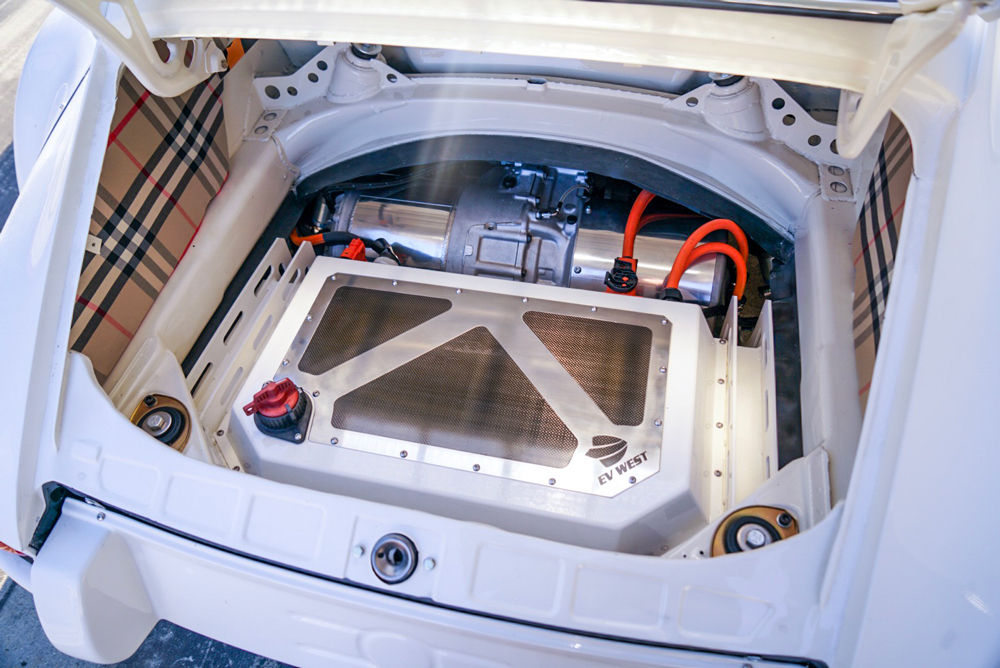
“As we do more volume,” Bream added, “we can offer more things that are specific to the EV community, like flywheels for electric cars—balanced and lightweight, but with no starter ring.” To make a single, custom flywheel would be cost-prohibitive, but a run of 100 is commercially feasible.
Customers requesting a conversion that EV West has already engineered are referred to one of the company’s authorized installation centers: Action Vehicle Engineering in Chatsworth, California; Peace Vans in Seattle, Washington; or a third location “coming online very soon.”
While the majority of EV West’s business is now street performance, it continues to supply some racers, including Entropy Racing, which PRI Magazine profiled in October 2022. Able to swap batteries in under two minutes, Entropy electric endurance racers contested the 25 Hours of Thunderhill in 2021 and 2022, finishing 29th and 17th, respectively. “Because we were doing something that no one else had ever done,” recalled Entropy founder Charlie Greenhaus, “we needed a reliable supplier with experience, and Michael is exceedingly knowledgeable about his product. He was interested in our project, he followed our progress, and was attentive to what we needed. He was always there for us when we needed him, and always a great resource.”
Additionally, “Michael has done a bunch of good turns for us. We had a bumpy start, because of an assembly mistake by one of their suppliers, but they were very responsive and very helpful, and they took it on the chin because of that.” Finally, Greenhaus noted how EV West has “spearheaded the supply chain for used Tesla parts, and that’s been good for the entire industry.”
Electrifying The Future
While Bream firmly wishes that “politics and policy were out of the conversation,” he also believes that “the way we’ve been doing things is not sustainable.” And “because I’m an engineer, I’m in it for sustainability. I need to get this fuel out of the ground, and I need to refine it, and I need to transport it to my car. The job of an engineer is to make processes as efficient as possible—and to be open to the idea that maybe this type of fuel isn’t the most efficient. Maybe if we switched to another type of fuel, we could capture it easier. What if you could put a stick in the ground with a fan blade on it—oversimplifying—and make fuel? Or put fuel collectors on your roof and collect it?”
He readily admitted that electric power is not ready “to sustain everybody’s needs right now.” Battery technology is still a major barrier. Bream speaks of the “cruelest irony” of a “fuel so light you can’t even measure it,” that requires a “fuel cell” made with lead, “the heaviest thing you can think of. But if you’re an engineer, you look at theoreticals. We’ve already replaced lead with ‘lithium’ batteries made mostly from aluminum, nickel, and copper. And every year they are making improvements. Theoretically you could have a battery that runs the Indy 500 or Baja 1000 with a single charge.” The electric “fuel” required to go the distance still doesn’t weigh anything.
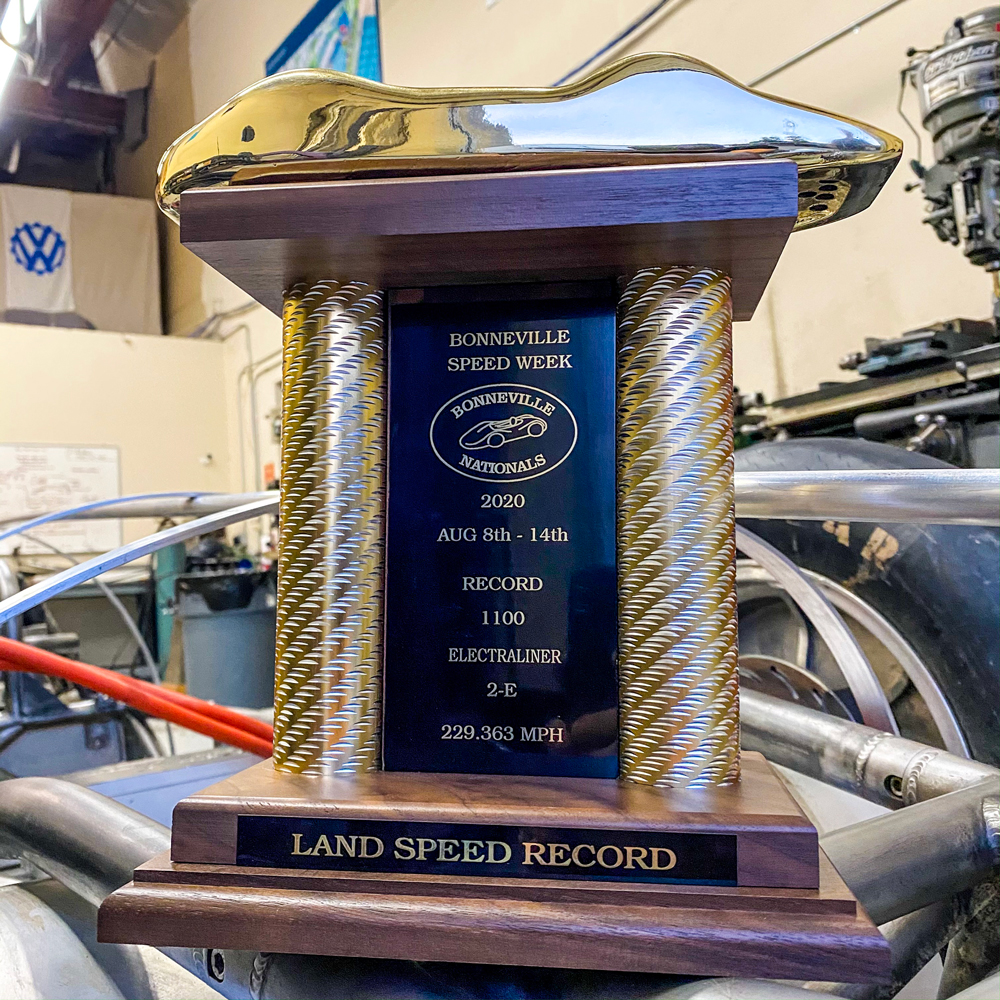
“So right now, electric cars are really good at tough environments where there is less oxygen, and they’re really good if the race is 10 minutes or less.” On the other hand, “we’ve hit the theoretical max for gasoline. Combustion-car records are falling, for good.” EVs now own the record at Pikes Peak and the Nürburgring. And “they are flirting with 1.9- and 1.8-second 0–60s that would make your eyeballs hurt.
“So we’re in the early-adopter phase, where EVs are just a couple of percent” of the total performance market. “But they are the latest thing, so you’re probably going to see annual increases of 50% for the next decade.”
He continued, “And in the long run, nobody’s going to care about the type of fuel you use. You may think it’s a big deal, but it’s not. It’s like the transition from gas to diesel, or from carbs to fuel injection. And it will open new avenues for racing. You could have indoor racing, because emissions are no longer a big deal, or late-night racing because noise is no longer a big deal. And it’s going to save racing. I don’t think people fully understand this, but the corporate sponsors are pushing for carbon neutral.” They care about public perception, whether the racers do or not. “Once you realize where the push is coming from, then it’s like, ‘Oh, yeah, it’s inevitable,’ because they always get what they want.”
Of course, there will be doubters, whiners, complainers, and (if you can forgive the pun) resistors. But Bream has a message for them: “This is just the first inning. So cool your jets and hang out. Drop some popcorn, buckle up, and watch this, because this transition to sustainable energy—it’s going to be epic.
“Nobody has ever seen anything like it,” concluded Bream.
 MEMBERSHIP LOGIN
MEMBERSHIP LOGIN JOIN PRI
JOIN PRI


